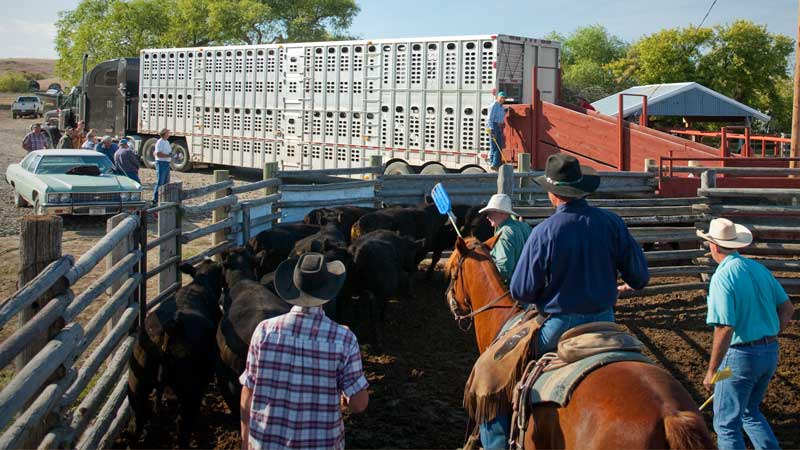
CENTENNIAL, Colo. (July 30, 2019) – While producers have traditionally participated in Beef Quality Assurance (BQA) because it’s the right thing to do, there is sound research that indicates BQA certified producers can benefit financially as well. According to a recent study by the Beef Checkoff-funded BQA program and conducted by Colorado State University (CSU), results show a significant premium for calves and feeder cattle sold through video auction markets.
The research study “Effect of Mentioning BQA in Lot Descriptions of Beef Calves and Feeder Cattle Sold Through Video-based Auctions on Sale Price,” led jointly by CSU’s Departments of Animal Sciences and Agricultural and Resource Economics, was conducted to determine if the sale price of beef calves and feeder cattle marketed through video auction companies was influenced by the mention of BQA in the lot description. Partnering with Western Video Market, CSU reviewed data from 8,815 video lot records of steers (steers, steer calves or weaned steers) and heifers (heifers, heifer calves or weaned heifers) sold in nine western states from 2010 – 2017.
The result was a premium of $16.80/head for cattle that had BQA listed in the lot description. This value was determined by applying the $2.71/cwt premium found in CSU’s statistical analysis to the average weight of cattle in the study data. When the BQA premium was constant on a per head basis, it implied higher weight-based premiums for lighter cattle (for example $3.73/cwt at 450 lbs/head) and lower premiums for heavier cattle ($2.24/cwt at 750 lbs/head).
“This study was a first of its kind opportunity to utilize advanced data analysis methods to discover if there was a true monetary value to participate in BQA,” said Chase DeCoite, director of Beef Quality Assurance. “Study results clearly show that participation in BQA and BQA certification can provide real value to beef producers. It means that the initiatives within the industry are rewarding cattlemen and women who take action to improve their operations and our industry.”
Additional study findings show that over the past 10 years, consistent frequency of BQA mentions have been included in the lot descriptions of cattle selling via video auctions. In some states, like Montana, the frequency of mentions has been fairly sizable and upwards of 10 percent or more of all lots of calves/yearlings offered for sale. Even without documentation of a premium in the past, the results imply that over time many producers have proactively chosen to highlight and emphasize their participation in BQA when marketing their cattle.
“The value of a seller being BQA Certified can really only be captured when information is shared between seller and buyer, which is consistently done via the sale of cattle by video auction companies,” said Jason Ahola, Ph.D. and professor of animal sciences at CSU. “By sharing the BQA status of the owner or manager of a set of cattle, the buyer can access information that is generally otherwise difficult to find in traditional marketing channels. This was a big reason for us to conduct the study, as it became clear that data on sellers’ BQA status were available on a large number of cattle sold through video auctions as well as other traits associated with the cattle. This information affected the ultimate selling price of the cattle.”
The results of the BQA value study emphasize the importance of transferring information from sellers to buyers as well as the importance of collecting BQA certification information during the auction process. Daniel Mooney, Ph.D. and assistant professor of agricultural and resource economics at CSU said a lot of information is transmitted from buyers to sellers in video auctions which made it ideal for the analysis.
“In addition to the BQA mention, our study controlled for other factors – such as lot characteristics, cattle attributes, and value-added practices like age/source verification and natural certification – that also influenced beef calf and feeder cattle sale prices. Importantly, the BQA premium existed even after accounting for these influential variables,” Mooney said.
“Our cow-calf and stocker consignors represent family operations from throughout the western United States who make their living in the cattle business. Profit margins in these sectors can be very marginal. Finding ways to enhance the marketability of cattle by adhering to best practices is a low-cost means of improving the quality and consistency of the cattle they market,” said Holly Foster, video operations manager of Western Video Market. “By sharing our historical data with researchers at CSU, we felt it would help our sales representatives and consignors as they try to understand the different attributes that cattle buyers are looking for to meet end user requirements.”
For more information on the study or to complete online BQA training, go to www.bqa.org/certification. |

